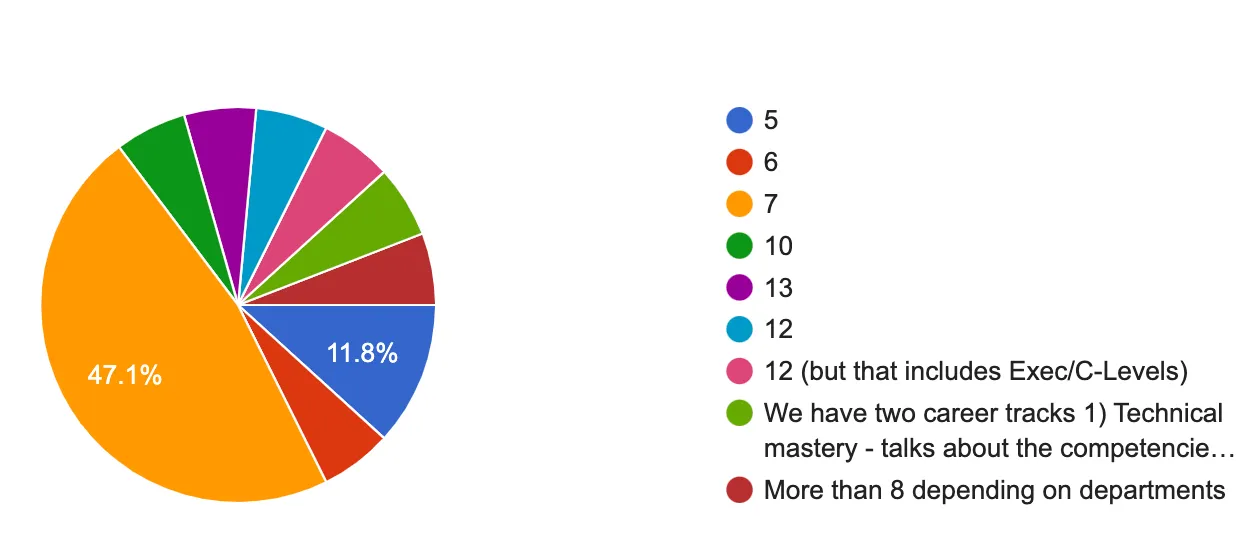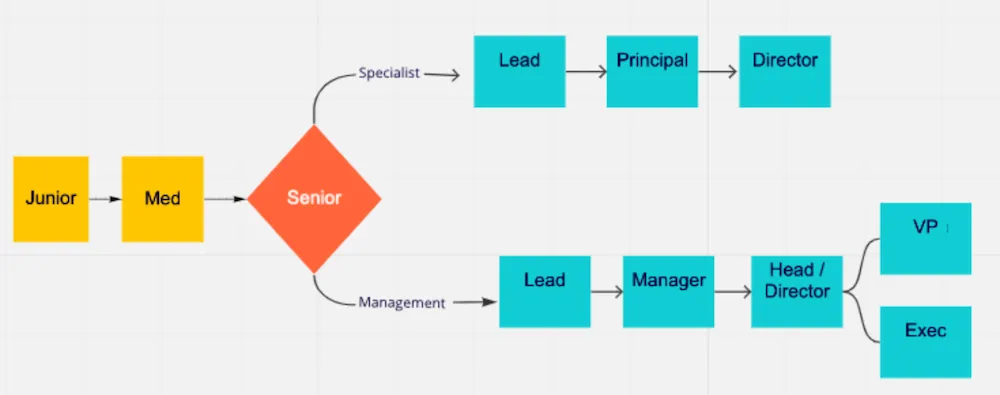When creating or iterating on career growth levels in companies, many people leaders want to know what everyone else is doing, and if it is working for them.
I believe the best way to be innovative is to solve the problem at hand in a way that suits your current business and internal team. However, gathering external data points always helps support your hypotheses.
This document gives a glimpse into what some other companies do. Although my sample size is only 20 companies, every bit helps.
Employee size
The following graph is based on data from 20 companies in Australia. This data really needs follow-up questions to get the most out of it, but as people leaders are the hardest working department in any business (*cough cough*) I wanted to make getting the information as quick and effortless as possible!

Number of career growth levels per company


Typical roadmap

Fun facts
- 50% of companies surveyed said they had 7 levels.
- 66% of companies split up these levels into sub levels. (For example, Senior L1, L2 etc.)
- Almost 100% have 2 career tracks: individual contributor and management.
- The consensus is that you diverge into IC or manager once you hit senior level
- Some companies are building levels to line up with Radford AON (or similar) benchmarking data.
Considerations
- Ensure your team structure and future hiring plan gives your team room to grow.
- Competencies and skills need to be clearly defined and communicated so employees know where they stand and how to progress, such as the frequency of performance reviews and what your principles for promotion are. For example, to be in your role for 6 months before a promotion is considered.
To conclude
Career levels need to suit your company, but starting with six or seven seems to be where most companies sit if they have a <100 employee headcount.
It makes sense that we see these levels break up into sub-levels (between 10 and 13 levels) when the employee headcount hits 100-500+.
Implementing levels early backed up by clear competencies and expectations without inflated job titles will help with any change management as you scale.
Questions I didn’t ask but would like to dive deeper into
How effective are these levels for the current team size and have they endured any problems with these levels as they scaled?
Are the behaviours and competencies expected at each level applied across all functions, or do they differ from function to function?
If they do, how would you go about building levels in functions where roles are not as homogeneous as others. For example, competencies and behaviours expected are relatively similar for all engineers, whereas an overarching marketing levelling framework may not apply if you have SEO specialists, performance marketers, CRM specialists, copywriters, brand managers with varying skillsets working under the same function.
Personally I have seen companies do both. Creating generic levels for the whole business only or creating it as a guideline and then departments tailoring it to suit their needs.
My suggestion would be to have three main competency areas that are consistent regardless of role.
These are general areas around stakeholder management, communication or collaboration and leadership, for example. They should be unique to your culture and values and must haves in order to succeed.
The fourth and/or fifth competency area/s should be specific to the discipline. This allows for both consistency across a business, reducing overall effort while allowing for tailored competency areas.








